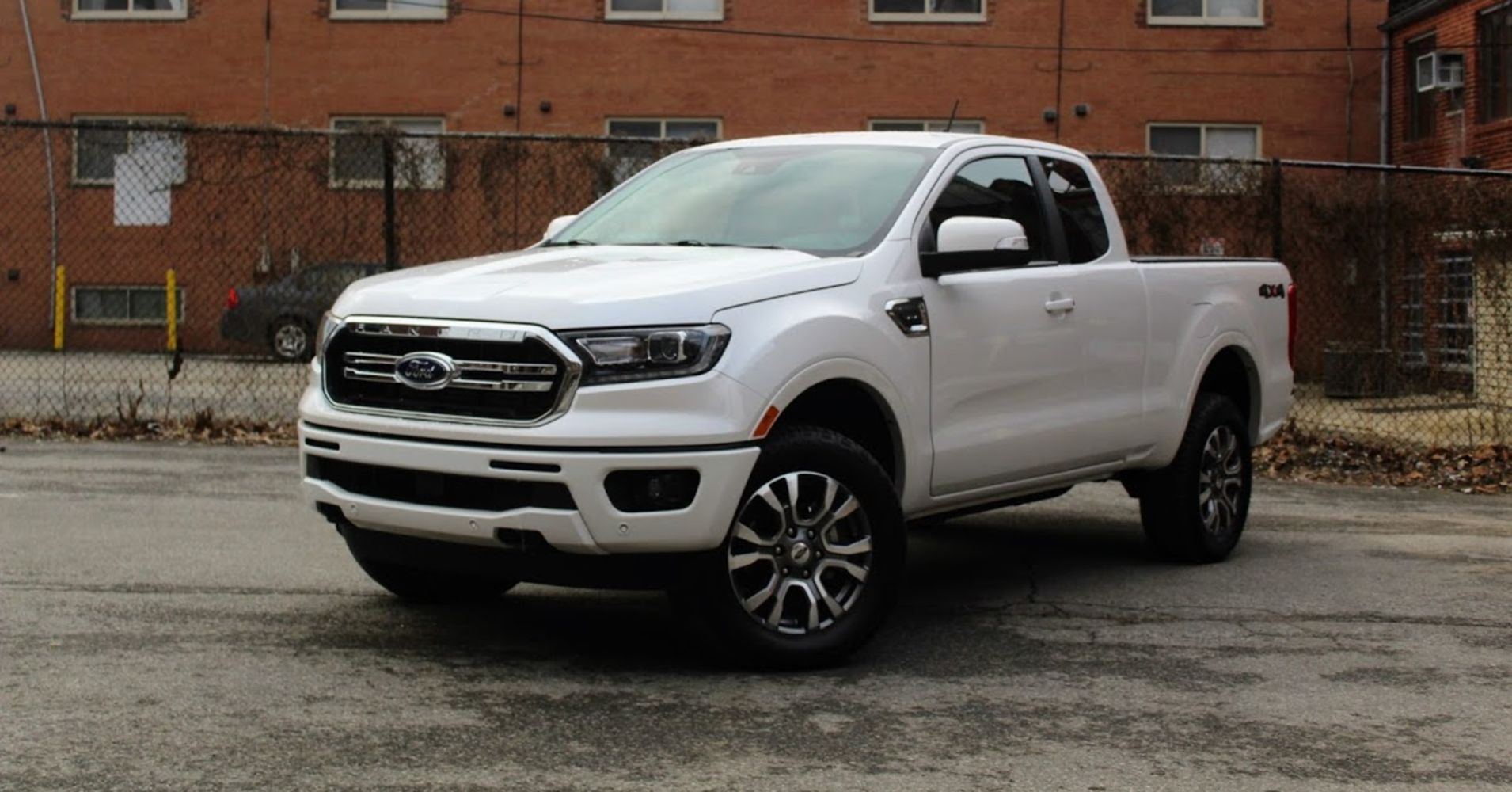
It’s been eight years since Ford last sold the Ranger in the U.S., leaving market share that’s been gobbled up by the stalwart Toyota Tacoma and revamped Chevy Colorado. Growing demand in the U.S. for trucks has Ford ready to reclaim some ground, so it’s launched a bigger, more refined and more capable Ranger for the 2019 model year.
After a week with the truck, it’s clear that the new Ranger is the midsize truck to beat. It offers great on-road performance, a comfortable cabin and the best hauling specs of any gas-powered, midsize truck. It’s certainly not the cheap truck it once was, but the Ranger justifies its price.
We tested a Ford Ranger Lariat Supercab 4×4. That’s a lot to take in, but it essentially means that it’s a top-trim truck with an extended cab and four-wheel drive. Extended-cab trucks have small rear seats and half-size rear doors that can only open when the front doors are open, also called “suicide doors.” A SuperCrew, in comparison, has four full-size doors and more substantial rear seats.
The price for this configuration was $40,685, which sounds like a lot for a “small” truck. But consider that this includes things like adaptive cruise control, lane-keeping assist, a premium audio system, a 6-foot bed and more towing capacity than the gas-powered Toyota Tacoma, Chevy Colorado or GMC Canyon. The diesel Colorado and Canyon will tow a few hundred more pounds, but the last Canyon diesel we tested was $48,290 and still lacked the refinement of this Ranger.
In a segment so long dominated by uncomfortable or archaic offerings, the Ranger really is a cut above the rest. The Colorado and Canyon already felt a generation ahead of the Tacoma, but the Ford takes another big leap. On a three-hour cruise from Detroit to Columbus, the Ranger was quiet and comfortable the whole time.
A 2.3-liter, turbocharged four-cylinder engine provides 270 horsepower and 310 pound-feet of torque, making short work of passing other cars on the highway. But because it’s matched to Ford’s 10-speed gearbox, the Ranger’s engine isn’t working too hard during higher-speed highway driving. We saw 23 miles per gallon on our trip that was largely at 80 miles per hour. Officially, the Ranger 4×4 is rated for 20 mpg in the city and 24 on the highway. That bests every other gas-powered rival.
Around town, the Ranger is even easier to like. It doesn’t wallow or lean into curves, handling its size more delicately than other trucks. With lots of hard buttons for essential controls and Ford’s delightful Sync 3 infotainment system, the Ranger is also the easiest truck to use every day.
It’s more refined than any other midsize truck, but that doesn’t mean it’s quite as compliant as a crossover or unibody vehicle. The Ranger’s back-end still feels busy at speed, something common among trucks built for hauling.
The powertrain, too, could be a bit smoother. The EcoBoost motor and engine pairing are good at delivering power efficiently, but there’s a noticeable delay between pressing the gas and getting the acceleration you expect around town. This so-called “turbo lag” is the result of the Ranger’s turbochargers needing exhaust gas to spool up and deliver their full boost, a common complaint about force-induction motors.
The best turbocharged engines on sale today have mostly erased this issue, and you definitely won’t have the problem in the naturally aspirated Tacoma or Colorado V-6s. It’s not anything to take serious issue with, just something to adjust to if you’re used to a non-turbocharged truck.
Finally, we’d highly recommend stepping up to a SuperCrew. You’ll lose a foot of bed space — so those who use the truck professionally and need a six-foot bed should stick with the SuperCab — but the trade-off is well worth it, as the SuperCab’s back seats are tiny and the suicide doors are annoying. That’s something the Ranger shares with all extended-cab pickups, though, so we don’t hold it against Ford.
We’d start with a Ranger XLT SuperCrew 4×4 for $35,310. Add the 302A package to get Sync 3, power seats, remote start and the sport appearance package for $2,800. A spray-in bedliner is almost always required if you plan to make use of your pickup, so add $395 for that.
Finally, the $795 technology package brings a navigation system and — more importantly — adaptive cruise control, something we always appreciate on long drives. With destination charges, our Ranger comes to $39,300.
There’s no doubt that the Ranger is the best midsize truck you can buy. It offers more flexibility, capability and refinement than its rivals at a price that is seriously competitive.
Many have complained that it isn’t the cheap, simple truck that it once was. And they’re right; the Ranger is bigger, heavier and pricier than it once was. What they leave out is that it’s also more capable, more refined, safer, more powerful, more comfortable and more advanced than that old Ranger while still offering extremely competitive pricing.
The bar has been set.
Exterior: 4.5
Interior: 4
Driving Experience: 4
Value: 5
Overall: 4.5
Price as tested: $40,685
* Rating is out of 5.
